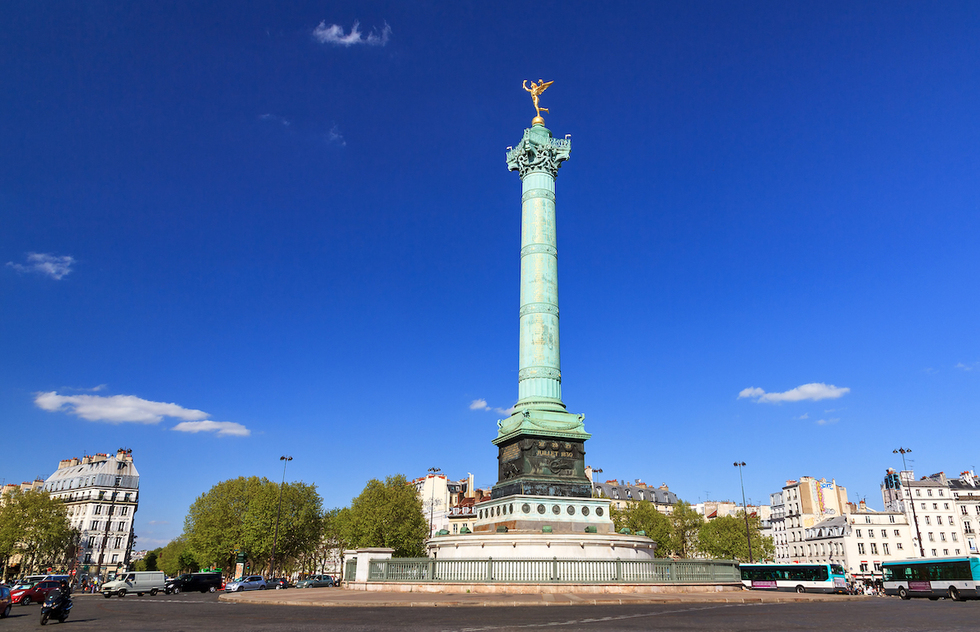The most notable thing about this giant plaza—aside from architect Carlos Ott’s modern Opéra House, opened in 1989—is the building that’s no longer there: the Bastille prison. Now an enormous traffic circle where cars careen around at warp speed, this was once the site of an ancient stone fortress that became a symbol for all that was wrong with the French monarchy. Over the centuries, kings and queens condemned rebellious citizens to stay inside the cold walls, sometimes with good reason, other times on a mere whim. By the time the Revolution started to boil, though, the prison was barely in use; when the angry mobs stormed the walls on July 14, 1789, only seven prisoners were left to set free. Be that as it may, the destruction of the Bastille came to be seen as the ultimate revolutionary moment; July 14 is still celebrated as the birth of the Republic. Surprisingly, the giant bronze column in the center honors the victims of a different revolution, that of 1830.






 About our rating system
About our rating system


